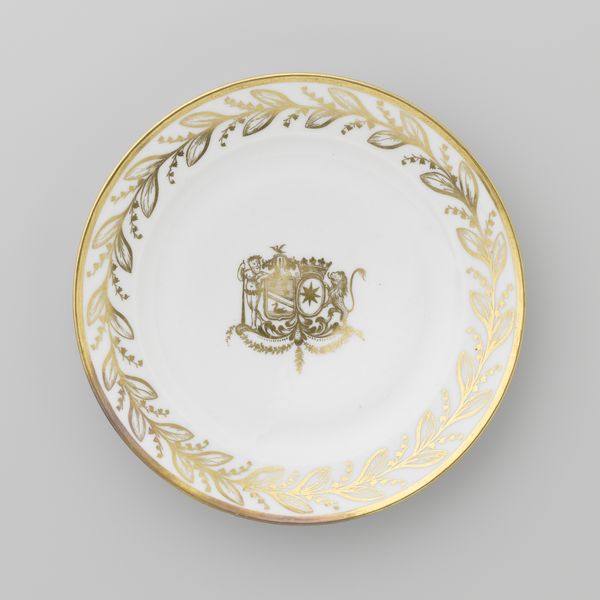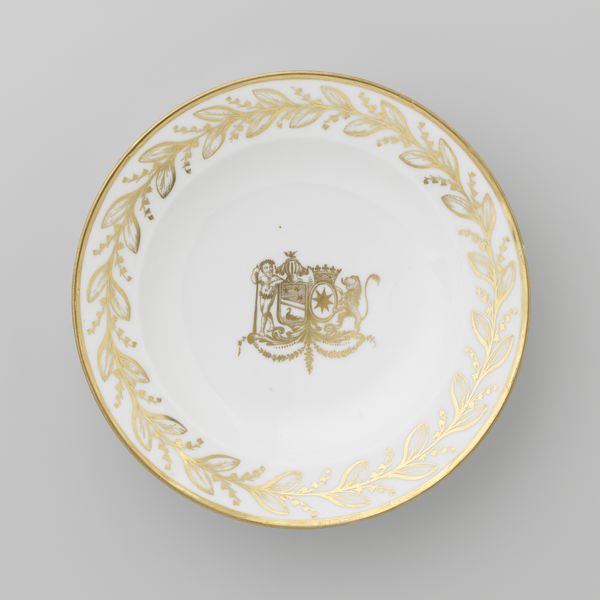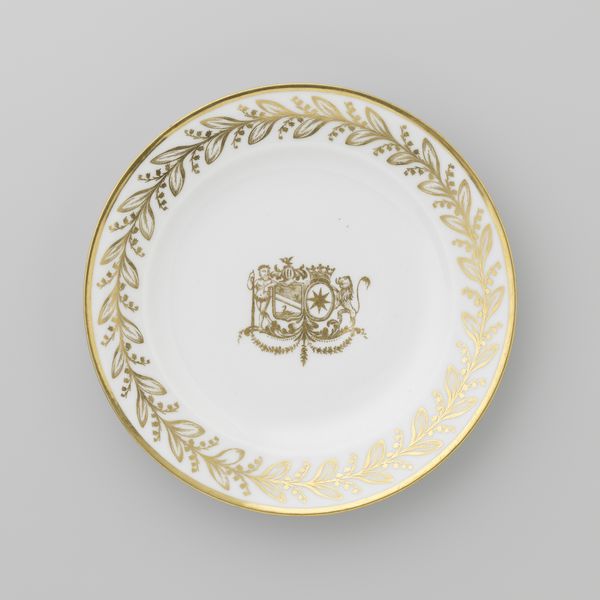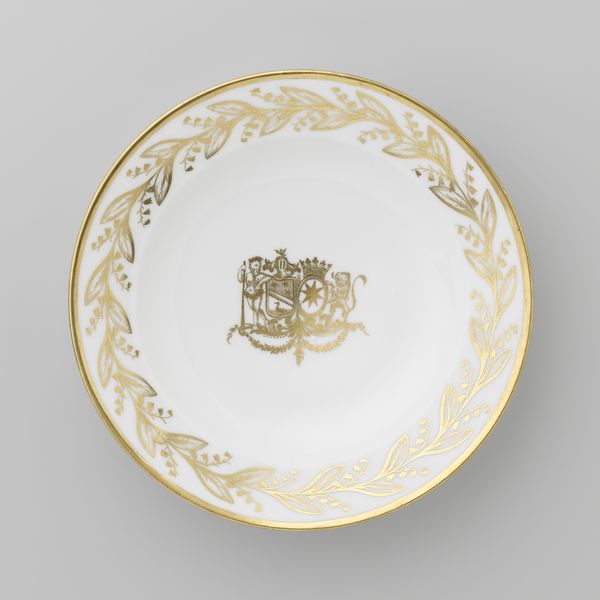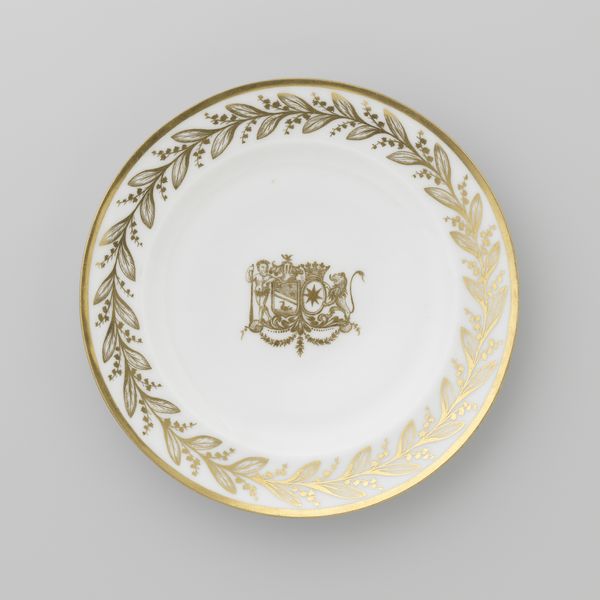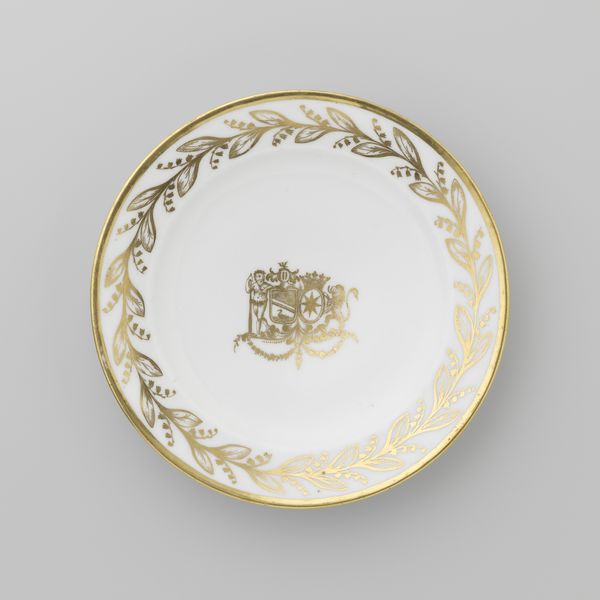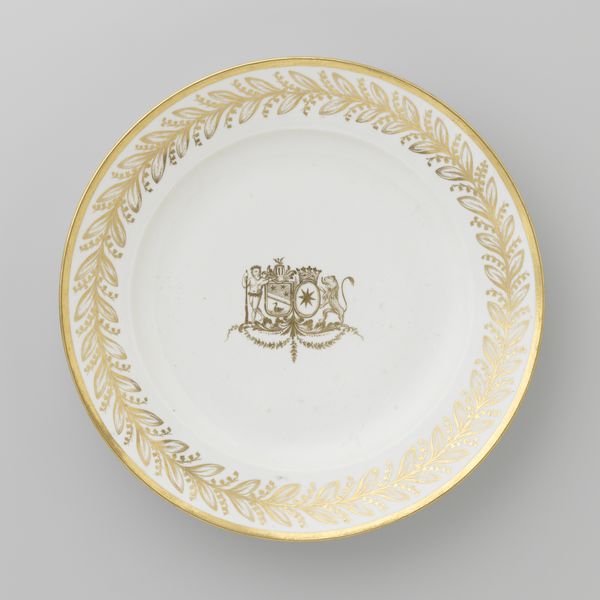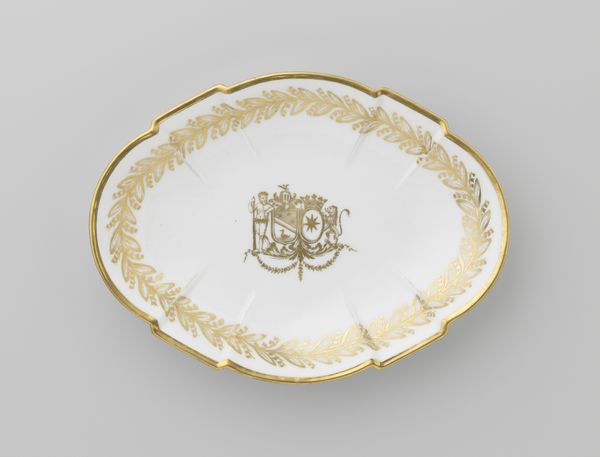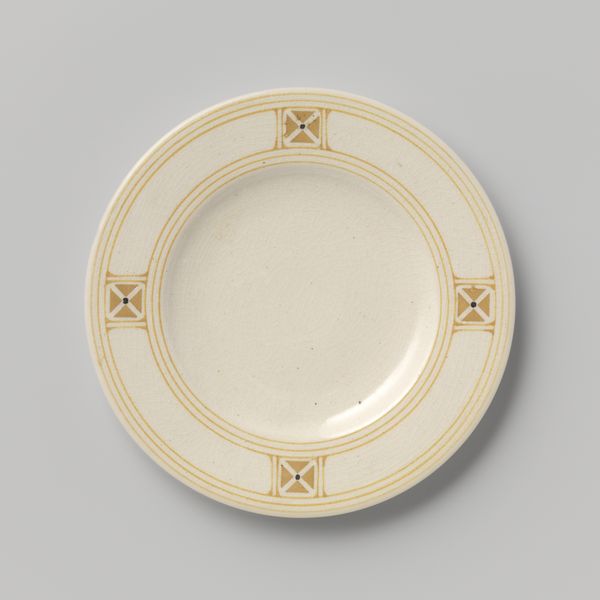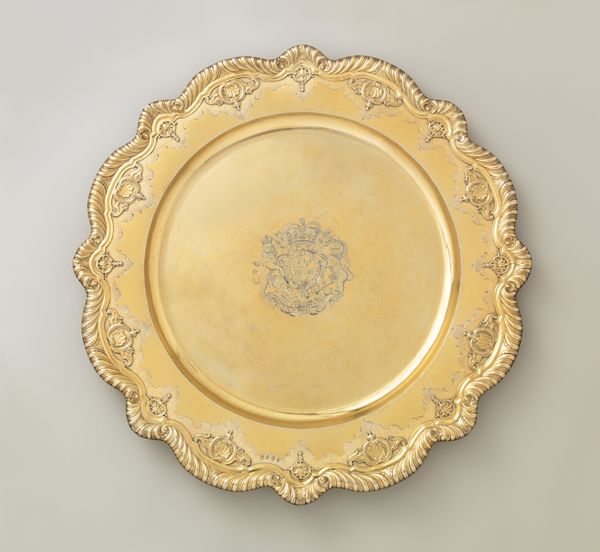
Plate with the coat of arms of Hendrik Peter Godfried Quack and Isabella Gertraud von Carnap c. 1790 - 1800
0:00
0:00
eblancheron
Rijksmuseum
print, ceramic, porcelain
#
neoclacissism
# print
#
ceramic
#
porcelain
#
stoneware
#
decorative-art
Dimensions: height 2.7 cm, diameter 21.5 cm, diameter 14.5 cm
Copyright: Rijks Museum: Open Domain
Editor: This is a porcelain plate, crafted around 1790-1800, displaying the coat of arms of Hendrik Peter Godfried Quack and Isabella Gertraud von Carnap. The gold decoration against the white porcelain feels very formal and ordered. What strikes you most about its composition? Curator: I am immediately drawn to the tension between the central heraldic device and the repetitive, almost rhythmic, foliate border. The coat of arms, while symmetrical, possesses a complexity and hierarchical arrangement that contrasts sharply with the simplified, repeating pattern of the gilded leaves. Do you see how the linear quality of the leaves, creates a sense of containment and accentuates the whiteness of the porcelain itself? Editor: Yes, I notice that now. It is almost as if the artist is playing with positive and negative space, the white porcelain ground acting as a void. Why emphasize the void in this way? Curator: The whiteness isn't simply absence; it becomes an active element defining the forms. Consider also the material itself. Porcelain, highly prized, lends a refined character, and elevates the heraldic image. It shifts from mere utilitarian object to something that broadcasts the elevated status of its owner. Note, for instance, how the minimal design invites close looking and appreciation of the medium itself. What is your sense of how the limited color palette plays into all this? Editor: I see that it simplifies and amplifies the plate's other formal elements. The stark contrast definitely draws attention to shape and design. Thanks for illuminating this beautiful work. Curator: The simplicity is deceptive. We see, by examining elements, that objects become statements. Thank you for sharing your impressions.
Comments
No comments
Be the first to comment and join the conversation on the ultimate creative platform.
